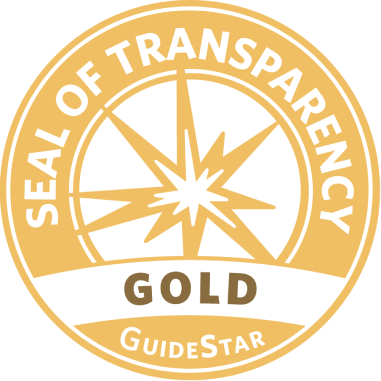Trauma, an invisible yet profound aftermath of conflict, permeates societies where war and instability have become a way of life. In regions like Iran and Afghanistan, decades of violence, displacement, and systemic oppression have created an enduring mental health crisis. Marginalized groups, particularly women and children, are disproportionately affected, bearing the brunt of social, emotional, and psychological wounds. This article delves into the multifaceted nature of trauma in these conflict zones, its pervasive effects, and the role of organizations like Omid Foundation in fostering resilience and healing.
The Nature of Trauma in Conflict Zones
Trauma in conflict zones manifests in various forms, from acute post-traumatic stress disorder (PTSD) to complex trauma arising from prolonged exposure to violence. For individuals in Iran and Afghanistan, trauma is not just a personal experience but a societal phenomenon, deeply intertwined with cultural and historical narratives.
The Impact of War and Political Instability
Afghanistan, a nation long plagued by war, has witnessed generations grow up amidst bombings, displacement, and loss. Children who have never known peace often display symptoms of toxic stress, including heightened anxiety, difficulty concentrating, and emotional detachment. Similarly, Iran’s history of political upheaval, combined with economic sanctions and systemic gender inequality, has left many grappling with trauma that extends beyond the battlefield into homes and communities.
Gender-Specific Trauma
In both countries, women and girls are uniquely vulnerable. They face not only the generalized impacts of war but also gender-based violence, forced marriages, and social ostracization. In patriarchal societies, where expressing vulnerability is often stigmatized, women’s trauma is frequently silenced, compounding their suffering.
Intergenerational Transmission of Trauma
Trauma does not end with the affected individual; it seeps into the next generation. Children born into conflict zones inherit not only their parents’ psychological scars but also the systemic barriers to education, healthcare, and economic stability. This cyclical nature of trauma perpetuates societal instability.
Understanding the Psychological Landscape
Addressing trauma in conflict zones requires acknowledging the unique psychological landscape shaped by cultural, historical, and social factors.
Cultural Perceptions of Mental Health
In both Iran and Afghanistan, discussing mental health remains taboo, particularly in rural areas. Mental illness is often perceived as a personal failing rather than a legitimate medical condition, discouraging individuals from seeking help.
Barriers to Mental Health Services
Access to mental health care is limited, particularly in remote regions. Afghanistan, for instance, has fewer than 300 mental health professionals for a population of over 40 million. In Iran, while urban areas offer more resources, economic instability and societal stigma still hinder access.
The Role of Religion and Community
Religion and community play a dual role. On one hand, they can be sources of comfort and resilience, providing a framework for understanding and coping with trauma. On the other hand, rigid cultural norms can reinforce silence and stigmatization, particularly for women.
The Role of NGOs in Addressing Trauma
Organizations like Omid Foundation are critical in addressing the deep-seated impacts of trauma in these regions. By focusing on marginalized adolescent girls and young women, Omid tackles the root causes of societal instability while fostering resilience and empowerment.
Holistic Approach to Healing
Omid Foundation employs a holistic approach that integrates trauma therapy, education, and vocational training. This model not only helps survivors heal but also equips them with the tools to build independent, fulfilling lives.
Trauma Therapy: Omid’s Trauma Management Center provides a safe space for survivors to process their experiences. Using culturally sensitive therapeutic techniques, it helps individuals regain a sense of agency and self-worth.
Life Skills Training: Beyond therapy, Omid focuses on equipping young women with practical skills, including financial literacy, communication, and conflict resolution, fostering independence and confidence.
Empowering Through Education
Education is a cornerstone of Omid’s mission. By providing access to formal schooling and scholarships for higher education, the foundation helps young women break free from cycles of poverty and trauma. Education not only offers a pathway to economic stability but also instills a sense of purpose and possibility.
Community Building
Omid recognizes the importance of community in the healing process. Its programs emphasize peer support, encouraging women to share their stories and build solidarity. This collective healing fosters a sense of belonging, reducing isolation and empowering individuals to advocate for change.
Challenges in Addressing Trauma
Despite the efforts of organizations like Omid, addressing trauma in conflict zones remains a formidable challenge.
Cultural and Social Barriers
In societies where mental health is stigmatized, encouraging individuals to seek help requires extensive community engagement and education.
Economic Instability
Economic instability exacerbates trauma by limiting access to basic needs like food, shelter, and healthcare. For many, survival takes precedence over mental health, delaying the healing process.
Political and Security Concerns
Ongoing conflict and political instability in Afghanistan, coupled with economic sanctions in Iran, create an environment where long-term planning is difficult. NGOs often face operational challenges, including funding shortages and security risks.
The Path Forward
To address trauma effectively, a multi-pronged approach is needed, involving governments, NGOs, and international organizations.
Raising Awareness
Public awareness campaigns can challenge stigmas surrounding mental health, encouraging individuals to seek help and communities to support them.
Investing in Mental Health Infrastructure
Governments and international organizations must prioritize mental health funding, particularly in conflict zones. Expanding access to trained professionals and community-based programs can make a significant difference.
Empowering Local Communities
Empowering local communities to take an active role in trauma healing ensures sustainability. Training community leaders and volunteers in basic counseling and mental health first aid can extend the reach of services.
Advocating for Gender Equality
Addressing systemic gender inequality is crucial. Empowering women through education, legal reforms, and economic opportunities can break cycles of trauma and marginalization.
Conclusion
Trauma in conflict zones like Iran and Afghanistan is a complex, multi-generational issue that requires comprehensive, culturally sensitive solutions. Organizations like Omid Foundation play a pivotal role in addressing the psychological scars of war, offering hope and empowerment to those most affected. By integrating trauma therapy, education, and community building, Omid not only helps individuals heal but also contributes to the broader goal of societal resilience.
Understanding and addressing trauma is not just a moral imperative but also a necessary step toward building peaceful, stable societies. As the world continues to witness the devastating effects of conflict, supporting initiatives like Omid Foundation is essential in creating a future where hope and healing can thrive amidst the challenges of war and instability.

